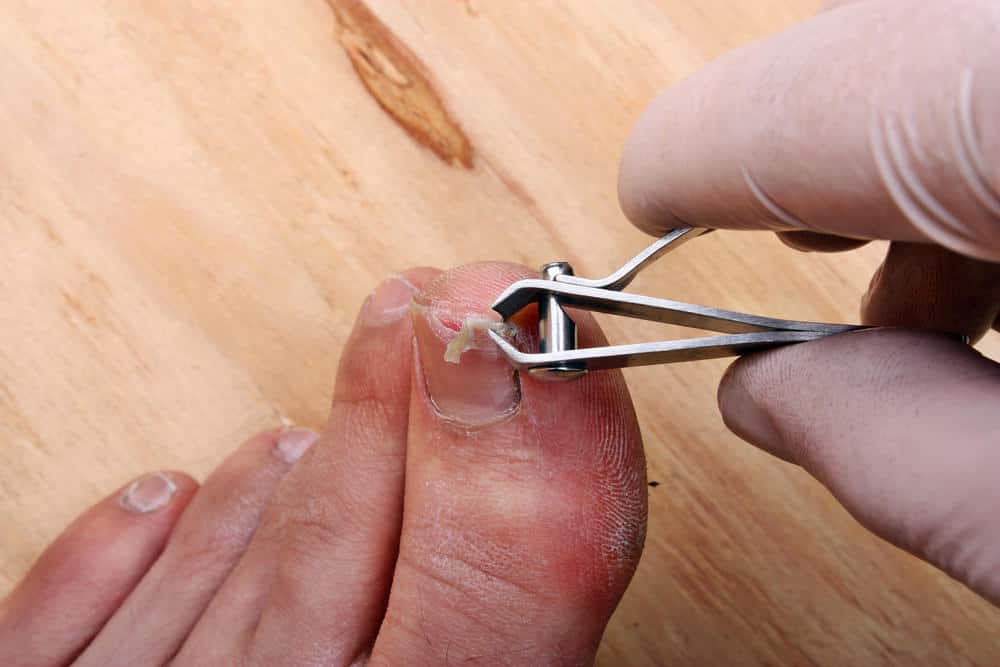Toenail fungus, medically known as onychomycosis, is a common condition that affects a significant number of individuals worldwide. Dealing with toenail fungus can be frustrating and impact the health and appearance of your nails. One treatment option that often comes up in discussions is scraping out the infected nail. In this article, we will explore the causes, symptoms, and treatment options for toenail fungus. We will also delve into the effectiveness of scraping out the infected nail and discuss other treatment options to help you make an informed decision about the best approach for treating your toenail fungus.
The Causes of Toenail Fungus:
Toenail fungus is primarily caused by fungal organisms, particularly dermatophytes. However, other types of fungi, including yeasts and molds, can also contribute to nail infections. Several factors can increase the risk of developing toenail fungus, including:
- Warm and Moist Environments: Fungi thrive in warm, damp places such as public showers, swimming pools, and locker rooms.
- Poor Nail Hygiene: Inadequate cleaning and trimming of nails can create an environment conducive to fungal growth.
- Nail Trauma: Injuries to the nail, such as cuts, bruises, or repetitive pressure, can provide an entry point for fungi.
- Weakened Immune System: Certain medical conditions, such as diabetes, HIV/AIDS, or autoimmune disorders, can weaken the immune system and make individuals more susceptible to fungal infections.
Understanding the causes of toenail fungus can help individuals take preventive measures and reduce the risk of developing this condition.
The Symptoms and Impact of Toenail Fungus:
Toenail fungus can present with various symptoms and significantly impact an individual’s daily life. Common signs of toenail fungus include:
- Discolored Nails: Infected nails may appear yellow, brown, or have white spots. In some cases, the nail may become thickened or have a crumbly texture.
- Changes in Nail Shape: The infected nail may develop an irregular shape, become brittle, or lift from the nail bed.
- Nail Pain and Discomfort: As the infection progresses, individuals may experience pain, discomfort, or sensitivity around the affected nail.
- Self-Consciousness and Emotional Impact: Toenail fungus can have a negative impact on self-esteem and confidence, leading to social withdrawal or embarrassment.
If left untreated, toenail fungus can spread to other nails or even to the surrounding skin, potentially causing more severe complications. The duration of treatment for toenail fungus can vary depending on the severity of the infection and the chosen treatment method.
Treatment Options for Toenail Fungus:
When it comes to treating toenail fungus, several options are available, including over-the-counter (OTC) medications, prescription drugs, and natural remedies. Let’s take a closer look at each of these options:
Over-the-Counter (OTC) Medications:
- OTC antifungal creams, ointments, and nail polishes containing ingredients like clotrimazole or amorolfine can be effective for mild cases of toenail fungus. These products help inhibit fungal growth and promote healthy nail regrowth.
Prescription Medications:
- In more severe cases, oral antifungal medications may be prescribed by a healthcare professional. These medications, such as terbinafine or itraconazole, work from within the body to eradicate the fungus. They are generally more potent and effective but may require a longer treatment duration and periodic monitoring for potential side effects.
Topical Treatments:
- Topical antifungal solutions or creams can be
applied directly to the affected nail. While topical treatments may take longer to show results, they can be effective for mild to moderate cases of toenail fungus.
Scraping Out the Infected Nail:
- Scraping out the infected nail is a procedure that involves removing the infected portion of the nail using specialized tools. This can be performed by a healthcare professional. Scraping out the infected nail allows for better access to the underlying fungus and can be combined with other treatment options for improved efficacy.
It’s important to note that scraping out the infected nail alone may not be sufficient to completely eradicate the fungus. It is often used as a part of a comprehensive treatment plan that includes antifungal medications or topical treatments.
Other Considerations and Preventive Measures:
In addition to the treatment options mentioned above, there are several practical tips and preventive measures that can help manage toenail fungus and prevent its recurrence:
- Maintain Good Foot Hygiene: Keep your feet clean, dry, and moisturized. Wash your feet daily, dry them thoroughly, and apply a moisturizer to prevent dryness and cracking.
- Trim Nails Properly: Cut your nails straight across and file the edges to prevent ingrown nails and reduce the risk of nail trauma.
- Wear Breathable Footwear: Opt for shoes made of breathable materials that allow proper ventilation and reduce moisture buildup.
- Avoid Walking Barefoot: Wear sandals or flip-flops in public areas such as swimming pools, locker rooms, and communal showers to reduce the risk of fungal exposure.
- Change Socks Regularly: Wear clean socks made of moisture-wicking materials and change them daily or more frequently if necessary.
- Avoid Sharing Personal Items: Refrain from sharing nail clippers, files, socks, or shoes to reduce the chances of spreading or contracting fungal infections.
By incorporating these preventive measures into your daily routine and considering the appropriate treatment options, you can effectively manage toenail fungus and promote healthy nails.
In conclusion, toenail fungus can be effectively treated through various methods, including scraping out the infected nail as part of a comprehensive treatment plan. However, it’s important to consult with a healthcare professional to determine the most suitable treatment approach for your specific case. Remember to practice good foot hygiene, take preventive measures, and seek timely treatment to effectively manage toenail fungus and restore the health and appearance of your nails.

